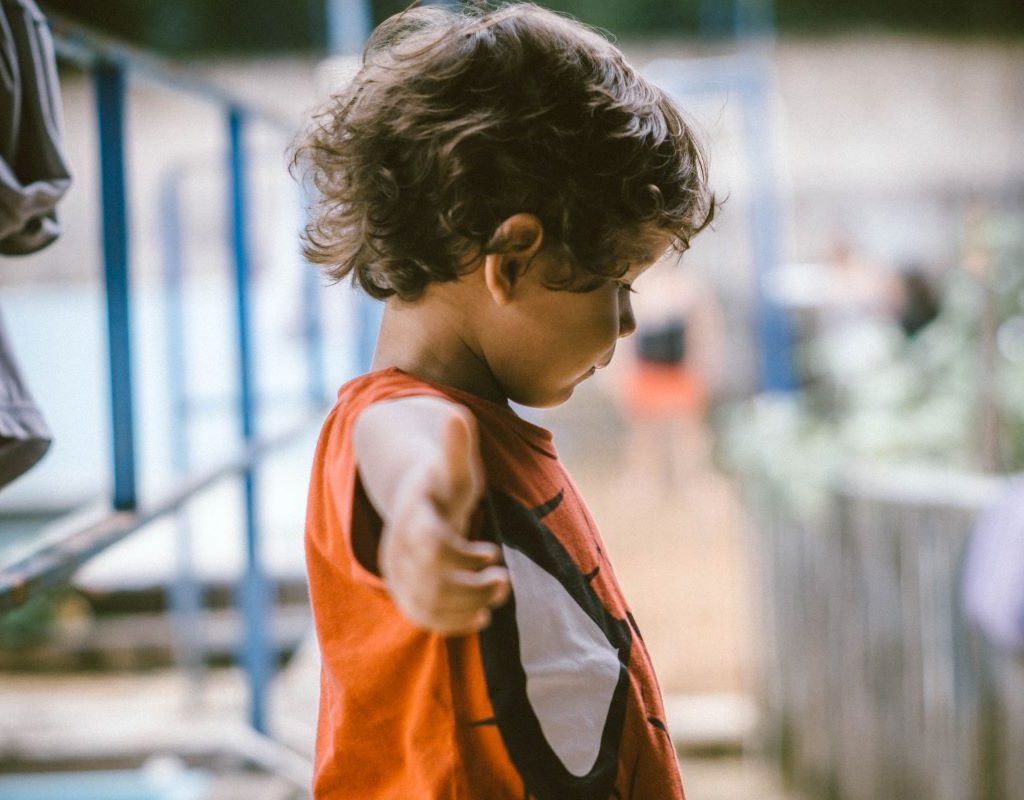If you’ve tried just about everything in the book to get your toddler to stop sucking their thumb, you definitely aren’t alone. Many parents deal with toddler thumb sucking, and it can be pretty frustrating, and well, downright annoying, especially since toddlers have a mind of their own and don’t take kindly to you pulling their thumb out of their mouth.
Luckily, there are some tried-and-true tips you can try to stop your toddler from sucking their thumb, and you’ll be happy to know that the basis of the advice involves encouragement or replacement for the habit, not punishment. Read on to find out how to get your toddler to kick their thumb-sucking habit to the curb.

How long does toddler thumb sucking last?
Even before birth, babies develop a sucking reflex, which causes them to start sucking on their thumb or fingers. As months pass by, they fall back on this innate action to express hunger or to self-comfort. For the most part, thumb sucking often goes away by 6 to 7 months, but some children don’t let go of the habit until 2 to 4 years old. The reason behind this often centers around coping mechanisms or trying to put oneself to sleep. Also, reverting back to thumb sucking, even after the child has stopped, can be quite common. However, you might encourage your child to give up the habit by age 5 or when their permanent teeth start coming in since thumb-sucking affects the alignment of the teeth and the roof of the mouth.

Tips to stop toddler thumb sucking
With this information in mind, you might wonder how to stop your toddler from sucking his or her thumb. The following tips will lead you in the right direction. Of course, you can always adapt these strategies to best suit your child’s personality. You’ll also gain more cooperation from your toddler if you explain to them why the habit needs to go away while providing some encouragement.
Encouragement and reward
One way to curb toddler thumb sucking is to set up a reward system. Dr. Houri Fatourachi D.D.S, a pediatric dentist, suggests creating a chart to keep track of your toddler’s progress. This chart can be as simple as your calendar, or you can come up with one that includes specific times of the day, such as morning, noon, playtime, and bedtime. For each day and/or time your toddler refrains from thumb sucking, you can add a star or another marker. Additionally, you would give your child a small but special reward like a sticker or doing a “happy dance” to his or her favorite song.
Offer alternatives to toddler thumb sucking
Another tip involves coming up with alternatives to thumb sucking. For toddlers, the habit seems to be connected more with self-soothing. However, they’ll replace that with “big kid” behaviors. For example, you can suggest hugging their favorite stuffed toy or a blanket instead of sucking on their thumb. Also, you can teach your toddler a song that requires hand motions, like “Itsy Bitsy Spider,” that would distract from the urge of sucking the thumb.
Identify triggers that prompt thumb sucking
Along the lines of finding habits to replace thumb sucking and tracking progress, you can also pinpoint occurrences that trigger this behavior. By figuring out what causes the anxiety or need for stimulation, you can help your toddler to work through the issues that cause these feelings. Once you’ve identified the triggers, then you can think of new habits and coping strategies to pass on to your child.

How to stop a toddler from sucking their thumb when nothing else works
Once in a great while, you might encounter a situation where you’ve tried everything, and nothing seems to work. Toddler thumb sucking carries over into the pre-school phase. So, what do you do? Here are some suggestions for the older child who tells you that they want to quit the habit but might need some help.
Cover their hands with mittens during sleep time
Dr. Homa Amini D.D.S., M.P.H., M.S. suggests, as a last resort, covering the hands with mittens or socks, especially at night. During the day, this strategy might not be as practical, but for bedtime and naptime, it might work.
Cover the thumb with a bandage or a plastic guard
Another method of helping an older toddler overcome thumb-sucking is to cover the thumbs with an adhesive bandage or a plastic guard. Either one of these options “reminds” your child of the habit that they are trying to quit. Also, neither one involves any foul-tasting, topical liquids.
When all else fails
If nothing else works, then you might consider calling your dentist for advice about how to stop your toddler from sucking their thumb. Some dentists might recommend using a palatal crib while others will take the time to explain the disadvantages of sucking the thumb to where your child will understand.
When the toddler phase has passed, you won’t have to worry whether your child will walk into the first day of school sucking their thumb. With these tips, a little encouragement from the rest of the family, and if necessary, some help from your dentist, your little one will beat this habit once and for all.


